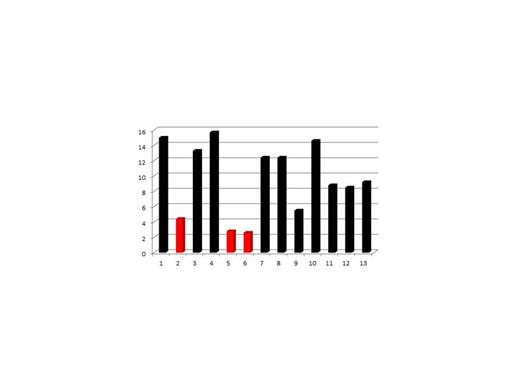Abstract

Background High dose chemotherapy (HDC) followed by autologous stem cell transplant (ASCT) is considered the standard of care for patients with multiple myeloma (MM). With most patients receiving induction therapy that includes corticosteroids. The combined effect of prior therapy for myeloma and ASCT related complications may result in hypotension and require intensive medical treatment. To date the incidence of adrenal insufficiency in the setting of ASCT is unknown. The effects of this underlying disorder in regards to post transplant outcome remain unknown as well. We set out to compare the outcomes of patients with multiple myeloma who underwent ASCT with adrenal insufficiency compared to those with sufficient adrenal function.
Methods We undertook a prospective study in 13 consecutive patients with Multiple Myeloma admitted for high dose chemotherapy and autologous stem cell transplant at Henry Ford Hospital between February 2014 through June 2014, with the first patient sample being obtained in on 2/14/2014 and last sample recorded in 6/23/2014. Random cortisol levels were obtained on the day of admission or day -2 (figure 1), prior to the start of high dose chemotherapy. All prior therapies included corticosteroids and consisted of the following RVD, DCEP, RD, VD, DT-PACE. Patients were classified into two groups those with cortisol levels > 5 and those patients who had cortisol levels <5. Endpoints analyzed included hypotension, septic shock, and duration of antibiotic therapy.
Results Of the 13 patients analyzed the median age was 60 years old (range 53-78), gender 8 male patients 5 female. All patients underwent high dose chemotherapy with Melphalan and Autologous stem cell transplant. Of the 13 patients in which data was obtained 3/13 23% had adrenal insufficiency prior to high dose Melphalan and ASCT. With a median cortisol level of 3.2 in the patient cohort who were found to be adrenal insufficient. The incidence of hypotension was 2/3 66% in the adrenal insufficient patients compared 1/10 10% in the cohort with sufficient adrenal function. Septic shock occurred in 2/3 66% of the adrenal insufficient compared to 0/10 in the adrenal sufficient group. The median duration of antibiotic therapy was 5 days in the adrenal insufficient cohort compared to 2 days in the patients with adequate adrenal function.
Conclusion In this small cohort of consecutive patients from a single center, we found that there was a high incidence of adrenal insufficiency 23% in patients undergoing ASCT. The treatment regimens varied in the study group with all patients receiving corticosteroid therapy in there induction regimen. Given the unexpectedly high incidence of adrenal insufficiency a consideration should be given to check a random cortisol level prior to the initiation of HDC. Supplemental therapy or treatment should be considered in this high risk group to avoid unnecessary complications and prolonged antibiotic use and supportive care in this patient cohort.
Random Cortisol levels obtained prior to Autologous stem cell transplant
No relevant conflicts of interest to declare.
Author notes
Asterisk with author names denotes non-ASH members.

This icon denotes a clinically relevant abstract


This feature is available to Subscribers Only
Sign In or Create an Account Close Modal